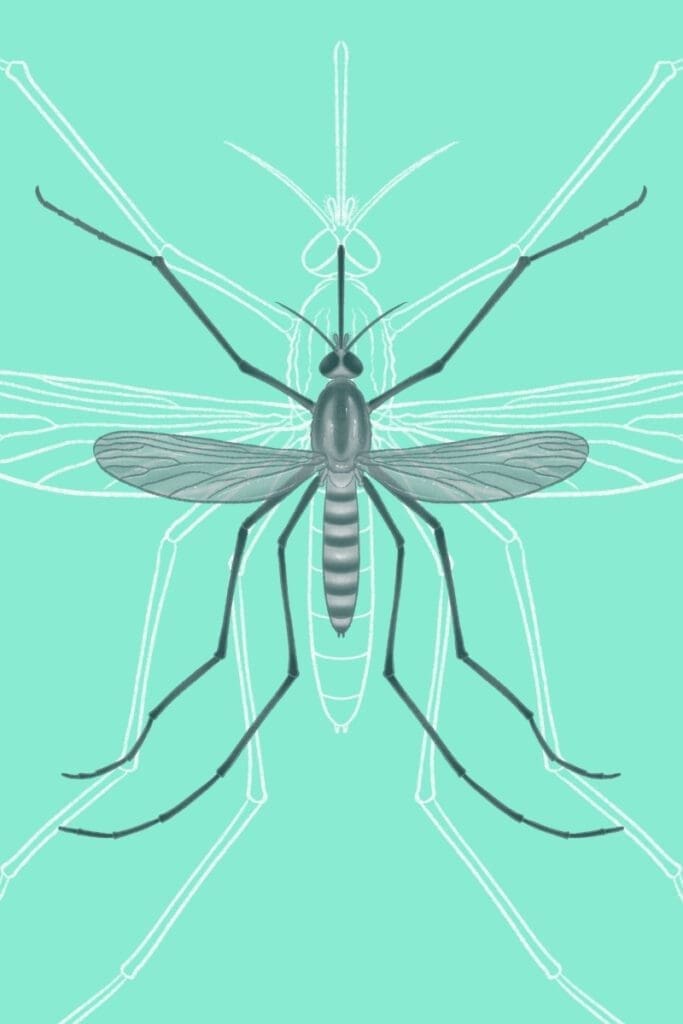
About Mosquitoes
Mosquitoes are true flies belonging to the family Culicidae. These tiny insects, typically measuring between 3-7 millimeters long, are notorious for their itchy bites and are known vectors (transmitters) of several serious diseases.
- Mosquitoes are the world’s deadliest animal due to the number of deaths caused by mosquito-borne diseases.
- As true flies, they only have a single pair of wings (in place of hindwings, they have a pair of smaller club-shaped organs called halteres).
- Their primary diet consist of sugary liquids like nectar from flowers, plant sap, and honeydew.
- Only female mosquitoes feed on blood, which provides essential proteins and lipids for egg production.
Mosquitoes in Your Home
Mosquitoes are active outdoors in the spring and summer, especially around dawn and dusk. Attracted by carbon dioxide (exhaled by humans), warmth, and moisture, they occasionally enter homes through open doors and windows, or small gaps in screens.
Most types of mosquitoes in the United States are nuisance mosquitoes, but there are 3 genera (Culex, Aedes, and Anopheles) that pose a significant risk to public health. Serious diseases they carry include West Nile virus, St. Louis encephalitis, Zika virus, chikungunya, dengue fever, and malaria.
Getting rid of mosquitoes requires identifying and eliminating potential breeding grounds. These include any sources of standing water, such as clogged gutters, birdbaths, and unused containers. Prevent them from entering your home by sealing gaps around doors and windows. For heavy mosquito populations, consider using a pest control company like MMPC for safe, eco-friendly pesticide application or mosquito pod installation.
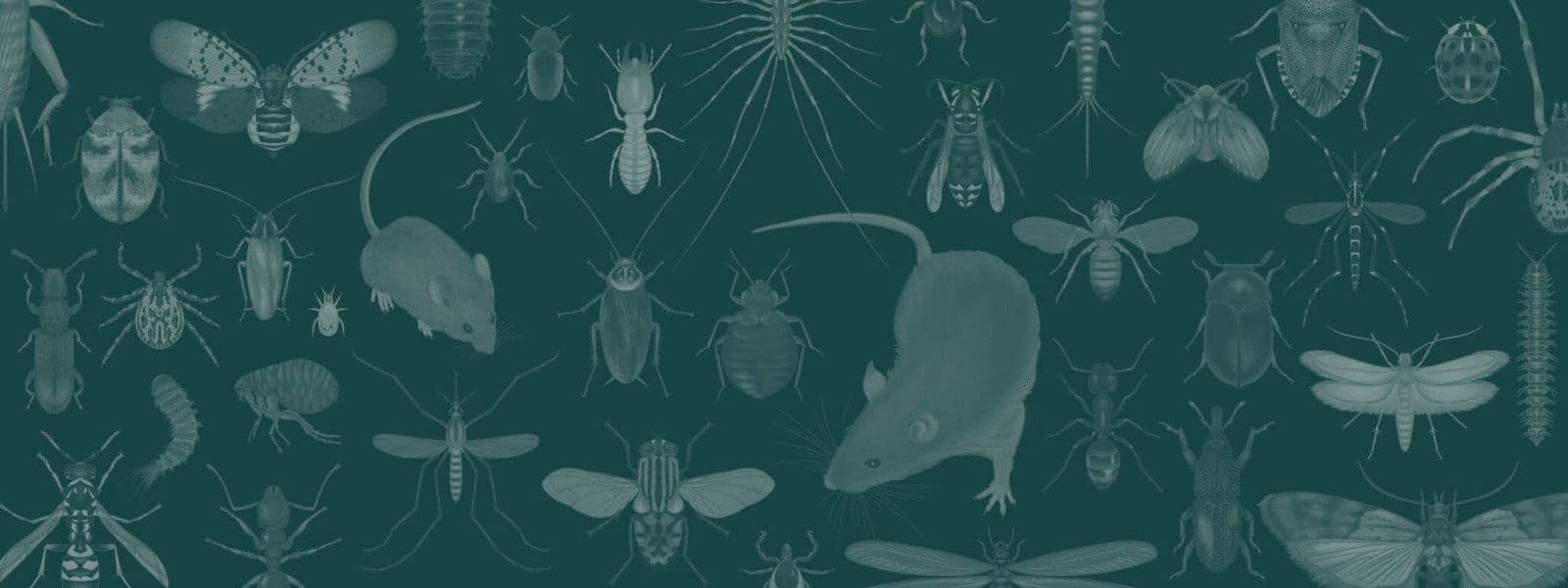
Pest Species in New York City / Tri-State Area:
Northern House Mosquito
Culex pipiens
Also known as the “common house mosquito,” northern house mosquitoes are the most prevalent species found in the northern United States.
These mosquitoes are mainly nocturnal (active throughout the night) although biting is most frequent around dusk and dawn.
They breed when temperatures rise above 50°F, laying their eggs in stagnant water.
Notable diseases they carry include West Nile and Saint Louis encephalitis.
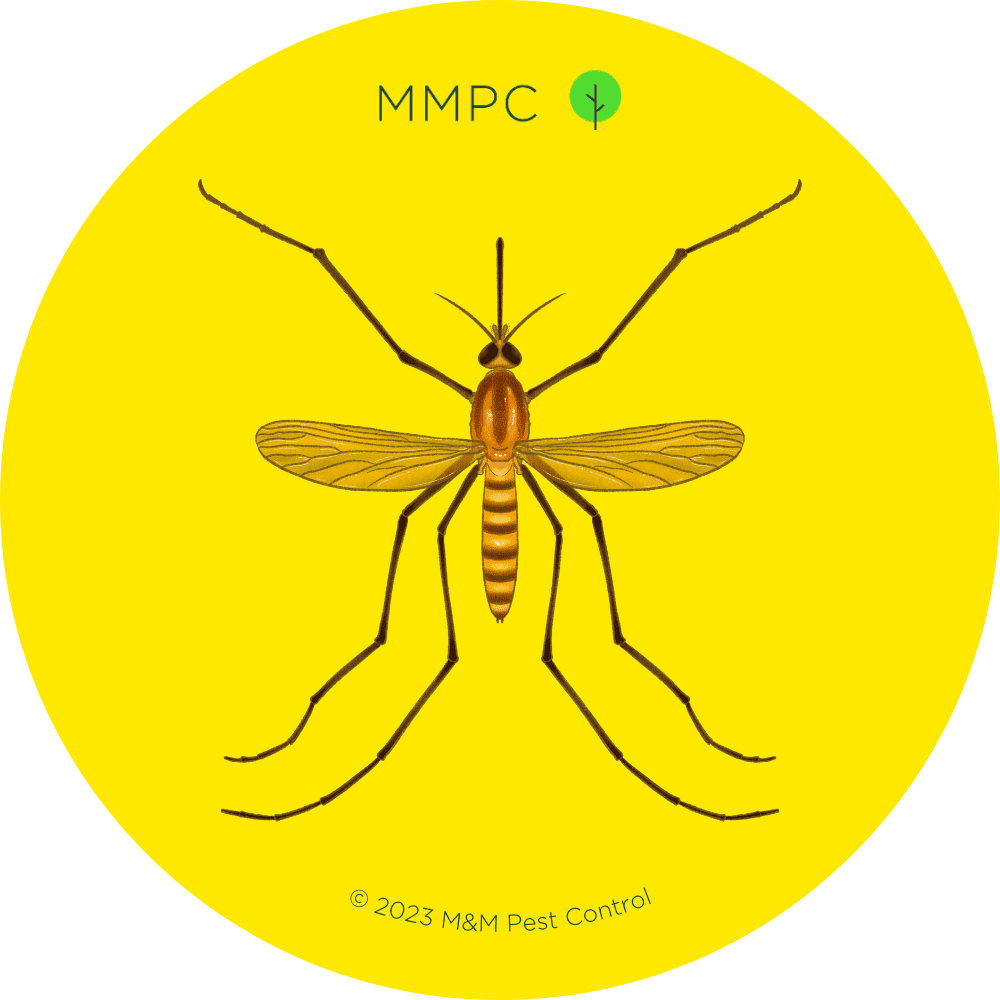
Size: 1/8″ – 1/4″ long (3 – 7 mm); about the size of a flaxseed
Color: Light brown with yellowish-brown stripes
Shape: Slender body with a long abdomen, feathery antennae, needle-like mouthparts, 6 spindly legs, and 1 pair of wings
Identifying Features
- 6 spindly, brown legs
- Feathery (plumose) antennae
- Small head with large compound eyes and a long, needle-like tube (proboscis)
- Slender body with a long, cylindrical abdomen and yellowish-brown stripes
- 1 pair of narrow, membranous wings
Asian Tiger Mosquito
Aedes albopictus
Asian tiger mosquitoes are aggressive and will try to bite their host multiple times if they’re able to.
These mosquitoes are active during the day, but biting is most frequent in the early mornings and late afternoons (around dawn and dusk).
They lay their eggs in objects that can collect water after rain, such as old tires, plant pots, and empty cans.
Notable diseases they carry include West Nile, dengue, and chikungunya.
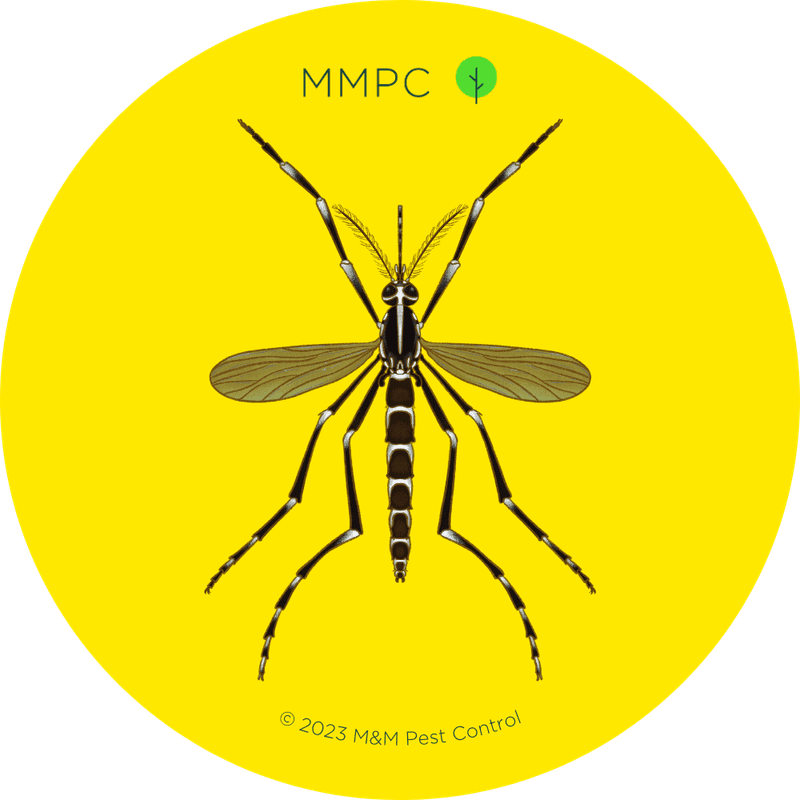
Size: 1/8″ – 3/8″ long (3 – 10 mm); about the size of a rice grain
Color: Black and white
Shape: Slender body with a long abdomen, feathery antennae, needle-like mouthparts, 6 spindly legs, and 1 pair of wings
Identifying Features
- 6 spindly, black legs covered in white bands
- Feathery (plumose) antennae
- Small head with large compound eyes and a long, needle-like tube (proboscis)
- Slender body with a long, cylindrical abdomen covered in white markings
- A characteristic white stripe on the center line of the head and thorax
- 1 pair of narrow, membranous wings
Yellow Fever Mosquito
Aedes aegypti
Yellow fever mosquitoes tend to live in close proximity to people, and can be found both indoors and outdoors.
Their biting and breeding behaviors are similar to the Asian Tiger Mosquito—they are daytime biters that are most active at dawn and dusk, and they lay their eggs in water-collecting containers.
Notable diseases they carry include yellow fever virus, Zika, dengue, and chikungunya.
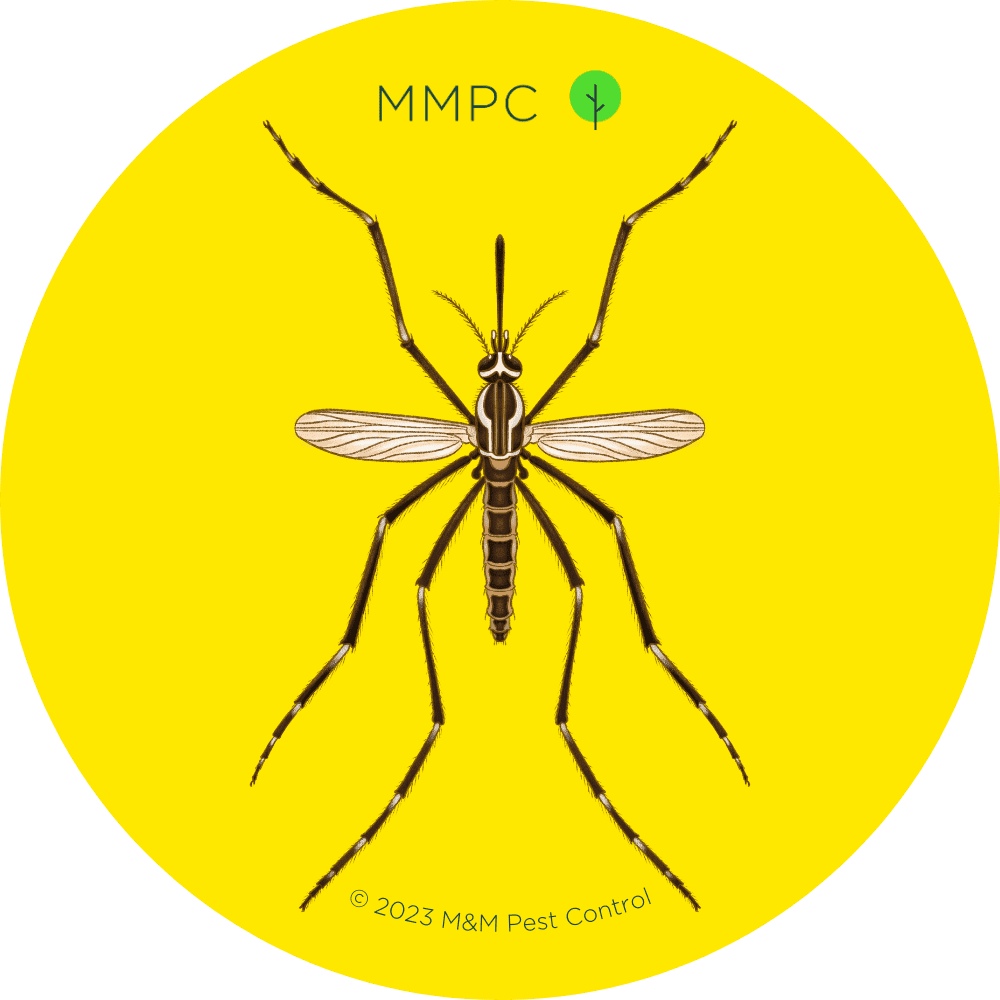
Size: 1/6″ – 1/4″ long (4 – 7 mm); about the size of a flaxseed
Color: Dark brown or black with white markings
Shape: Slender body with a long abdomen, feathery antennae, needle-like mouthparts, 6 spindly legs, and 1 pair of wings
Identifying Features
- 6 spindly, black legs covered in white bands
- Feathery (plumose) antennae
- Small head with large compound eyes and a long, needle-like tube (proboscis)
- Slender body with a long, cylindrical abdomen covered in white markings
- A characteristic white lyre-shaped marking on the thorax
- 1 pair of narrow, membranous wings
Eastern Saltmarsh Mosquito
Aedes sollicitans
Eastern saltmarsh mosquitoes are usually encountered in areas along the East Coast.
Their main breeding sites are coastal salt marshes, where they lay their eggs in moist soil just above water level. They are strong fliers and can travel more than 30 miles from their breeding sites.
Biting happens most frequently at dawn and dusk, although these mosquitoes may also bite during the day when disturbed.
Notable diseases they carry include eastern equine encephalitis and dog heartworm.

Size: 1/8″ – 1/4″ long (3 – 7 mm); about the size of a flaxseed
Color: Golden brown with pale stripes
Shape: Slender body with a long abdomen, feathery antennae, needle-like mouthparts, 6 spindly legs, and 1 pair of wings
Identifying Features
- 6 spindly, brown legs with pale bands and a yellow section in the middle
- Feathery (plumose) antennae
- Small head with large compound eyes and a long, needle-like tube (proboscis)
- Slender body with a long, cylindrical abdomen and pale stripes
- 1 pair of narrow, membranous wings
Common Malaria Mosquito
Anopheles quadrimaculatus
Common malaria mosquitoes are primarily found in the eastern and southeastern parts of the United States. They are the only species of mosquito that carries malaria.
These mosquitoes are active throughout the night, although biting is most frequent around dusk and dawn.
They lay their eggs on the surface of stagnant water, often in freshwater areas like ponds, streams, birdbaths, kiddie pools, and pet water bowls.
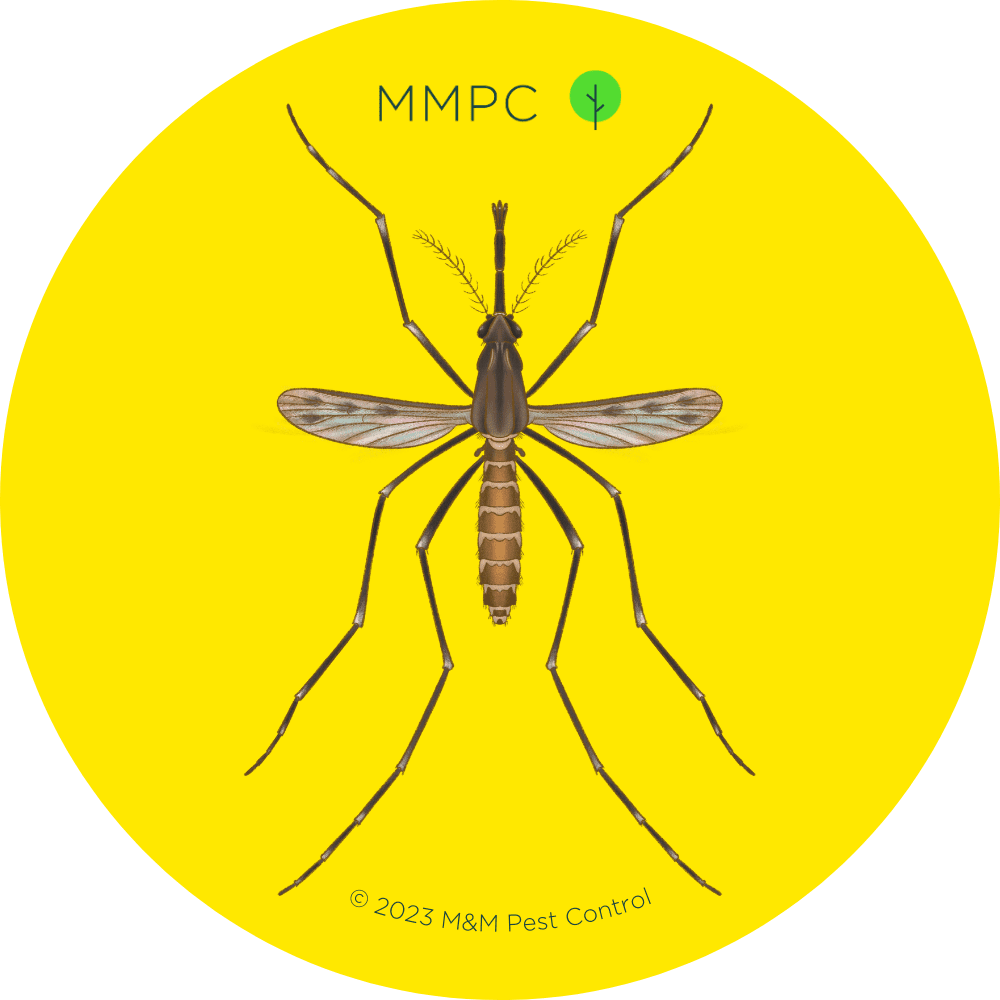
Size: 1/6″ – 1/5″ long (4 – 5 mm); about the size of a flaxseed
Color: Light brown to dark brown
Shape: Slender body with a long abdomen, feathery antennae, needle-like mouthparts, 6 spindly legs, and 1 pair of wings
Identifying Features
- 6 spindly brown legs with lighter spots at the joints
- Feathery (plumose) antennae
- Small head with large compound eyes and a long, needle-like tube (proboscis)
- Slender body with a long, cylindrical abdomen
- A distinct resting position with the abdomen pointed up in the air at a 45° angle
- 1 pair of narrow, membranous wings with 4 dark spots


